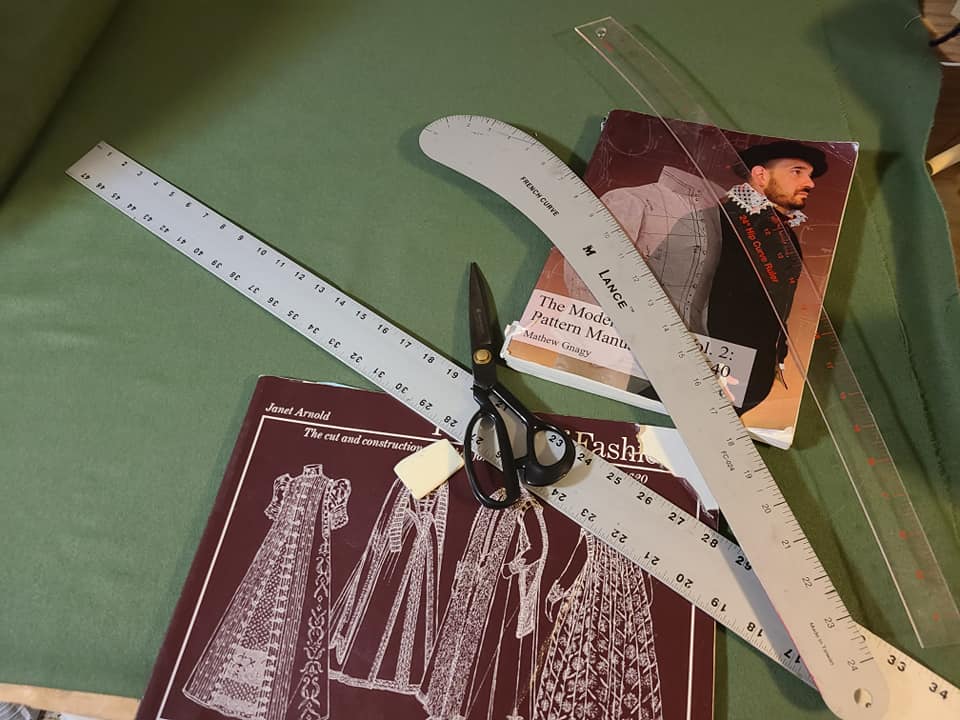With my base layer completed I am now in the process of making the venetian style hose for my outfit. Venetian hose first crop up in England at the end of the 1570 and are still seen in art as late as the 1610’s. The pair I will be making are of a sage green twill wool, lined with linen and decorated with silk lace.
Before I dive into the construction of the hose I would like to vent a bit about fabric choices. One of the most difficult aspects of historical tailoring I have run into is trying to find appropriate materials. Yes its easy to find wool, linen, and silk fabrics today, but how close are these modern fabrics lining up with the ones used in the past? Just like today there were numerous weaves and quality of fabrics available to tailors of the 16th century. When looking at the written records of the period, and studies done on those records, it can be seen that specific weaves were used more commonly for various types of garments.
In this instance I have the issue of picking an appropriate wool fabric for the hose. In several studies I’ve looked at (carried out by The Tudor Tailor and Stuart Peachy) hose were commonly made of russet, kersey, and frieze woolen fabric. Each one of these fabric seem to have their own different weaves and qualities, but all have the common quality of being well fulled and hence warm and dense fabrics. Finding good modern fabrics that exhibit similar qualities can be a royal pain, and often we just have to make sacrifices and compromises on this.
As the original tailors bill which spurred my imagination for this project listed kersey wool for the hose I set out to find something that lined up with descriptions of kersey I have read. In the end I selected a twill wool in sage green. While it does have the twill weave that is very similar to surviving fragments of 16th century textiles I don’t feel that it is heavy enough to qualify as a kersey. But since the climate of today is not the climate of the 16th century I am willing to make the compromise on this. Also while blacks, greys, and natural colored wools appear to be most common I really wanted to use green for these hose (The last 2 pairs of hose I’ve made have been of black or russet). Still frustrating, but Ill end my rant here.

The draft for the hose is a combination of several drafts. I used the “bara” method of proportional drafting explained in The Modern Maker book series, but have applied it to a draft in Patterns of Fashion 3. The pattern in Patterns of Fashion is of a pair of extant Venetian style hose held in the Bayerisches National Museum in Munich. They are dated to the first quarter of the 17th century. I am making a number of changes to the pattern in an attempt to see if I can make it line up better with what I have noticed in English art from the end of the 1590s and very early 1600’s. It appears to me that Venetian style hose at the end of the 16th century begin to have a less sever tapper to the knee and that the knee opening becomes wider. Admittedly this is my own speculations. To achieve this I ended up curving the side seams and simply expanding the knee opening. The Patterns of Fashion example has a strait side seam and relatively tight tapper at the knee.
Next post will cover the actual construction of the hose and we will see how the pattern modification works.

